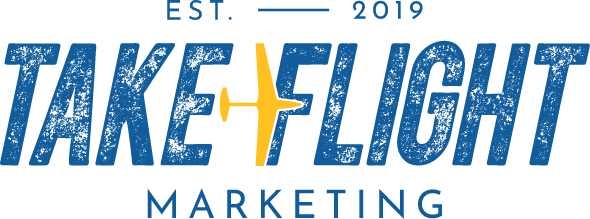Stop the Scroll: The Meta Ads Creative Formats Dominating 202
Meta’s algorithm keeps getting smarter—but it can’t fix a boring ad.
In 2025, your creative format is your targeting.
With automation taking over audience segmentation and placements, brands that win are the ones testing multiple formats—each optimized for attention, emotion, and clarity. Static image ads still have a place, but they’re not leading the pack. Instead, video-first and multi-format creative strategies are setting the pace.
The question isn’t “Should I run Reels or carousels?” anymore. It’s “Which mix of formats keeps my audience watching, clicking, and converting?”
Let’s break down the formats outperforming right now—and how to use them intentionally.
Strategy 1: Lean Into Motion-First Creative
If your ads don’t move, your audience won’t either.
Short-form video (especially Reels and Story placements) continues to dominate Meta’s feed. But what’s changed in 2025 is how motion is used—it’s less about polish and more about pattern interruption.
What’s working:
UGC-style videos with natural lighting, quick hooks, and subtitles.
Motion graphics that highlight product features in the first 2 seconds.
Loopable clips where transitions are so seamless they stop the scroll twice.
Pro tip: Add captions and on-screen text in native font styles—Meta’s algorithm favors ads that look like organic Reels.
Example hook lines:
“I didn’t think this would work… until I tried it.”
“POV: You’ve been doing it wrong this whole time.”
“Before you buy another one of these, watch this.”
Motion-first ads are not about cinematic storytelling—they’re about authenticity, emotion, and speed. Keep them between 7–15 seconds, and make the first three seconds impossible to ignore.
Strategy 2: Blend Carousel and Collection Ads for Product Discovery
Carousel ads are having their comeback moment—but not in the way you remember.
Instead of endless product shots, high-performing brands are now using carousels as storytelling tools—each card revealing part of a journey. Think of it like a digital comic strip: setup, tension, payoff.
Winning approaches:
Story carousels: Each frame reveals a transformation, ending in a testimonial or offer.
Educational carousels: Teach something (“3 ways to style it,” “3 problems this solves”).
Before/after sequences: Great for wellness, home, or beauty brands.
Pair carousels with Collection Ads (available through Advantage+ Shopping campaigns) to instantly connect your story to shoppable items.
Why it works: It meets users mid-funnel—those who aren’t ready to buy but are curious. Carousel + Collection lets them swipe, explore, and convert without ever leaving the feed.
Strategy 3: Static Isn’t Dead—It Just Needs Context
Yes, static still works—but only when it’s built for Meta’s modern feed.
The mistake most brands make? Treating static images like mini billboards. Instead, treat them like visual tweets: punchy, emotional, and context-aware.
Static creative that converts in 2025:
Text overlays that read like headlines (“The $20 secret to better sleep”)
Product-focused shots with human touch (a hand holding it > product on white background)
Data-driven graphics that visualize social proof (“Over 30,000 parents switched this year”)
Static assets thrive when used as retargeting creative or paired with dynamic product ads. Their job isn’t to go viral—it’s to close the loop.
Pro tip: Always design statics in 1:1 or 4:5 aspect ratios and keep copy minimal. Meta still reads too much text as ad clutter.
Action Steps: How to Optimize Your Creative Mix This Month
Audit your ad library: Identify which formats (Reels, carousel, static, collection) you’ve used in the past 90 days.
Set a 70/20/10 split:
70% proven formats
20% new tests
10% experimental (voiceovers, memes, trends)
Refresh creative every 2–3 weeks: Meta’s learning phase resets when creative fatigue sets in.
Test with structure: Duplicate ad sets and isolate one creative variable at a time (format, hook, CTA).
Measure beyond CTR: Look at thumb-stop rate, watch time, and add-to-cart rate.
Remember: you can’t scale what you don’t test. The best-performing Meta advertisers in 2025 aren’t guessing—they’re iterating weekly.
Final Thoughts
Meta’s automation has leveled the playing field. Everyone has access to the same AI tools, placements, and targeting options.
The differentiator? Creative.
If you’re not testing multiple formats and styles, you’re not giving the algorithm enough to work with. The good news is—motion, story-driven carousels, and bold static designs don’t require huge production budgets. They just require strategy, structure, and a willingness to experiment.
If you need help creating a creative testing framework that actually scales, that’s what we do at Take Flight Marketing.
👉 Book a discovery call and let’s make your next campaign your best one yet.
FAQ’s
What are the best Meta Ads creative formats in 2025?
The top-performing formats are short-form Reels, carousel ads with story-driven sequencing, and UGC-style motion videos. Static images still work best for retargeting and awareness refreshes.
How often should I refresh my Meta creative?
Every 1-2 weeks. Creative fatigue happens fast, and Meta’s algorithm favors fresh assets.
What’s the ideal length for Meta video ads?
The sweet spot is 7–15 seconds. Use the first three seconds to grab attention, then deliver your key message.
Do carousels still work on Meta Ads?
Yes. Carousels paired with Collection Ads perform well for storytelling and product discovery—especially mid-funnel.
